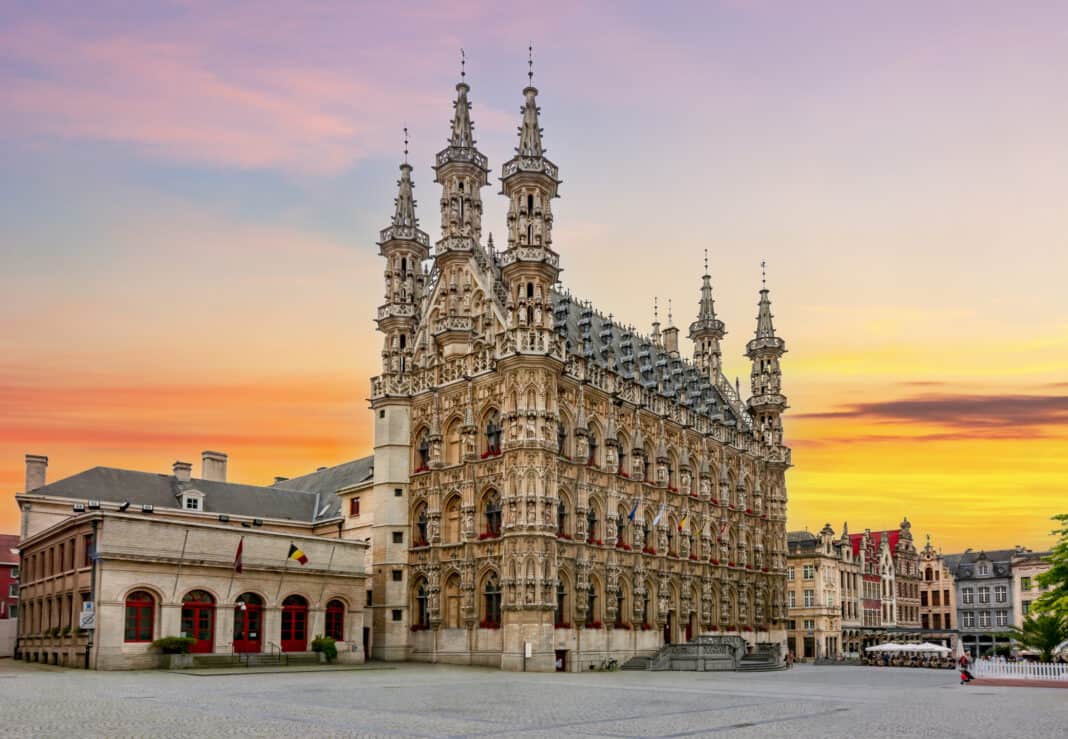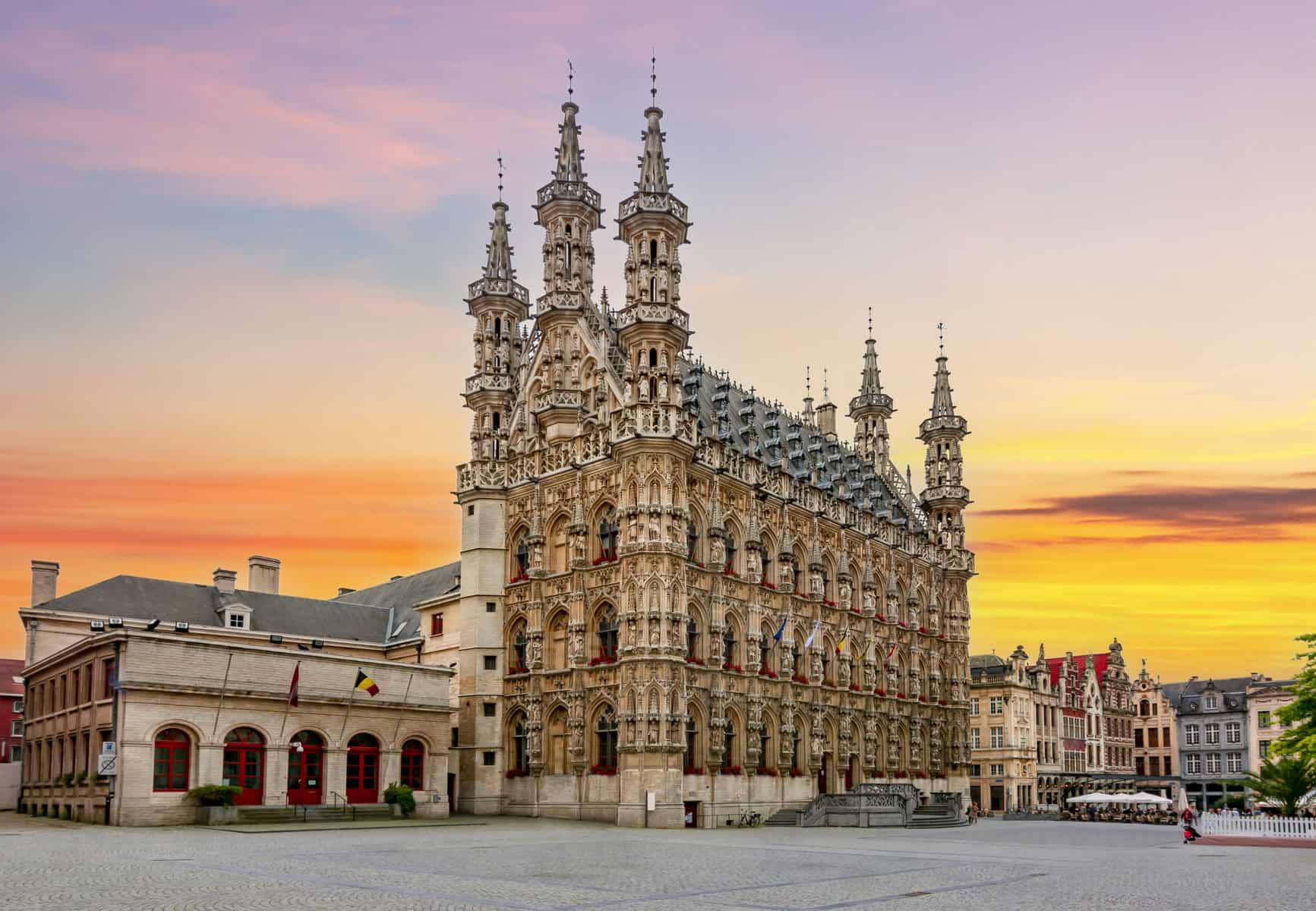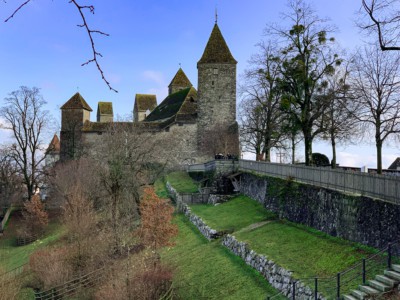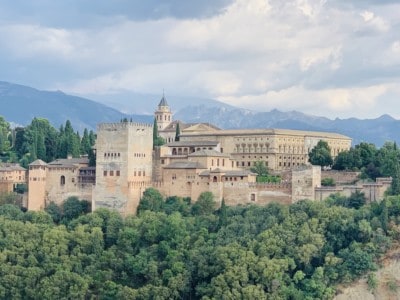20 of the top things to do in Leuven Belgium (2023)

Overshadowed by more famous Belgian destinations like Bruges and Ghent, the beautiful city of Leuven is, in my humble opinion, one of Belgium’s hidden gems, certainly in the country’s Flemish region.
There’s lots of great things to do here to justify a short trip.
Why visit Leuven?
Like Bruges and Ghent, there are many top things to do in Leuven. It is packed full of charm and home to many historical and architecturally impressive buildings.
Among its many highlights, you’ll find arguably one of Belgium’s most eye-catching town halls (the Stadhuis), the stately St Peter’s Church (Sint-Pieterskerk), and two fabulous beguinages (historic housing communities).
Hard to miss is Leuven’s buzzing, vibrant atmosphere. This is due in no small part to the city being a university town. It is the home of the Katholieke Universiteit Leuven (KU Leuven) and has a sizeable student population.

Lovers of Belgian beers will also be in their element, particularly fans of the country’s world famous beer export, Stella Artois, which is brewed here (together with Leffe Blonde).
If you fancy a night out, you can go from bar to bar in the attractive Oude Markt (old market square). For this reason, locals fondly call it ‘Europe’s longest bar’ because many bars are located here.
The icing on the cake is that you can get to Leuven from central Brussels in around 30 minutes by train. So it’s a perfect place for a day trip. It’s also a great base for exploring other attractive Belgian cities such as Liege and Mechelen.
Read on for some insider tips on the best things to do in Leuven Belgium, and how to make the most of your time.
This post contains affiliate links
Where is Leuven?
Find Belgium’s capital Brussels on a map, then look slightly to the right and you’ll easily find Leuven.
Located in the country’s Flemish region, and roughly in the northern half of Belgium, Leuven is well connected to the rest of Belgium. It’s less than 30 km from Brussels, 44 km from Antwerp and 23 km from Mechelen.
About Leuven
One of the first things you notice when you walk around the main streets of Leuven, certainly during term time, is the large number of young people cycling through the city and across pedestrianised areas. This is because Leuven is a university city and home to the Katholieke Universiteit Leuven (KU Leuven).
KU Leuven is the country’s largest university and the oldest in the Low Countries (present day Belgium, Luxembourg and the Netherlands). It was founded in the 1420s.
The student population undoubtedly adds great colour and vibrancy to this charming city.
The different university buildings scattered around the centre are important contributions to the rich tapestry of period buildings here. Not least among these is the Grand Beguinage, which the university has owned since the early 1960s, but in fact dates back to the 13th century.
Some of the most notable landmarks were destroyed either during the First World War, Second World War, or both. They were then painstakingly rebuilt and restored. However, you’d never know it by looking at their elegant facades.
In particular, I’m referring to the colossal university library and its imposing tower. Both of these stamp their authority on the huge square, Monseigneur Ladeuzeplein.

During the Middle Ages, Leuven became an important centre for trade thanks to the River Dyle. This runs through the city in the west.
But it was in the 15th century that many of its iconic landmarks, including the Town Hall and St Peter’s Church appeared on the skyline.

Today, as you explore Leuven, you’ll discover a laid-back and easily walkable city blessed with many green spaces, fascinating sights and top notch entertainment.
How to get to Leuven
Leuven has excellent bus and train connections.
If you are arriving at Brussels Midi by Eurostar as I did, getting to Leuven is a piece of cake.
The journey takes around 30 minutes. The next train stop was Brussels Central Station followed by Brussels Nord. These are two of Brussels’ main train stations in the downtown area. So, if your starting point is elsewhere in the capital, you can also reach Leuven from either one of these two important stations as well.
If you are flying into Brussels Airport, it is also possible to get a direct train to Leuven. The journey time takes 15 minutes.
As the train connections are so good, I’d advise you only to get the bus if you are trying to save money and time isn’t a factor in your plans.
I realised this when I took a bus to Mechelen to save on costs, and it took me over an hour. The train takes much less time and is the best way to get here.
Leuven’s bus and train station are located next to each other on an expansive square called Martelarenplein.
To reach the city centre, which is about a 10 to 15 minute walk, head down Bondgenotenlaan. It’s a long straight road that starts on the other side of the square and is framed at the entrance by two grand Flemish buildings.
If you don’t want to walk, you can take several different buses, including numbers 1 and 2. These will drop you near to St Peter’s Church and the Town Hall.
How to get around Leuven
Although you will feel it in your legs by the end of the day, I would thoroughly recommend exploring Leuven on foot. Most of the historical landmarks are located centrally and apart from being mindful of the many cyclists, it’s the ideal place for pedestrians to explore.
Some sights are a bit further out. However, most of these are grouped close together, so it’s also easy to see them on foot with a bit of planning.
The only exceptions are Park Abbey, apparently one of Belgium’s best-preserved abbeys, and Arenberg Castle and Park, which both require a bus to get to.
You can also book onto a walking tour to either explore with a guide or independently.
Things to do in Leuven
Below I’ve listed out the top things to do in Leuven. Like other Belgian towns and cities of similar size, there is a great variety of things to do in Leuven.
Many are in the main centre. Here are some highlights that are worth adding to your to-do list.
Marvel at The Town Hall (Stadhuis)
As you enter Leuven’s Grote Markt (Grand Place) and look up at the intricately designed gothic Town Hall (Stadhuis), it is not difficult to understand why some guide books describe this landmark as an ‘architectural wedding cake’.
This beautiful building really is as impressive in real life as it looks in books and on the internet.

If you have ever been to Brussels and seen the Town Hall in the capital’s Grand Place, I think you’ll agree Leuven’s gives it a good run for its money when it comes to splendour.
Leuven’s Town Hall is even more magical at night when it’s lit up. And in the summer you could spend a while sitting at the outdoor bar opposite marvelling at its breathtaking façade.
It’s arguably the city’s top tourist attraction.
When you consider that it took 20 years from the late 1440s to the late 1460s to complete the main construction, you start to appreciate the excellent craftsmanship that must have gone into delivering its finer details.
As I learned reading about the building, the more than 200 statues you can see on the exterior date from after 1850. The building is a masterpiece and we have to be thankful that it was one of the few buildings in central Leuven not to sustain any lasting damage during the two world wars.
You can book onto guided tours to go inside. The tickets are sold from the tourist office just around the corner or from this website.
Stop off in The Grote Markt (Grand Place)
An important focal point in the city, the cobbled Grote Markt stands between the Town Hall and St Peter’s Church. It is lined with some attractive Flemish buildings.
You’ll also find a few bars/restaurants where you can sit out in the warmer months and watch the world go by. I stopped off for a drink at Brasserie Gambrinus, which has a beautifully designed interior.
Visit St Peter’s Church (Sint-Pieterskerk)
Leuven’s Town Hall takes some beating, and although Saint Peter’s Church can’t possibly compete with its grand neighbour in terms of architectural splendour, it is still an impressive building.


The church dates from a slightly earlier period than the Town Hall (the 1420s).
Originally, architects had planned to add towers that rose 170 metres high, but these were never completed. It appears that the ground underneath wasn’t deemed stable enough.
The restored church now has an innovative visitors experience (launched about three years ago). It allows you to view its art treasures via a tablet or hololens (a ‘mixed reality’ headset). For example, you can see Dieric Bouts’ Last Supper via this medium and his The Martyrdom of Saint Erasmus.
Go to the Oude Markt and Europe’s longest bar
This fabulous square (which is actually rectangular in shape) is a very short walk from the Grote Markt.
The Oude Markt (old market square) is a hive of activity, particularly during term time when the generous offering of bars and restaurants are filled with KU Leuven students.
The many bars you can find next to each other here have led to it being dubbed ‘Europe’s longest bar’.

If you don’t want to compete with the crowds for a table, there are several other spots where you can sit down and admire your surroundings. You’ll see the stately Flemish buildings that line each side of the square.
One of the most impressive is Holy Trinity College at the south end of the square.
If you wander around, there are also some great eateries and places to drink in the streets around the square, notably on Parijsstraat.
One of the best places I ate nearby was De Nachtuil (the Night Owl). This was recommended to me because it served authentic Belgian cuisine. It did not disappoint.
Explore the beguinages
As with Mechelen, Leuven has two beguinages (begiinhofs) – scenic housing developments created during the 1200s for lay religious women who ran them as self-sufficient communities.
The Grand Beguinage
The Grand or Great Beguinage (Groot Begijnhof in Flemish) has justifiably been awarded UNESCO World Heritage site status and is one of the largest of its kind in the Low Countries.
Established in the early 13th century, this incredibly picturesque and tranquil area of the city has a real village feel. The Visit Leuven website says about 360 beguines lived here at its height in the 1600s.


In 1962, the university bought the property and pumped money into its restoration. Today it provides accommodation for students, professors, foreign visitors, and university staff.
This beguinage was the first I had ever visited, and I was really struck by how unique it is (I also explored those in Mechelen). The cobbled streets that can be found in many of its roads plus the period lighting – there are Victorian-style street lanterns scattered across its footprint – really add to the magical feel of the place.
There is a stream that runs through the centre and a few footbridges that also add to the charm.
You can reach the Large Beguinage in several ways. From the Grote Markt, you can either head down the long, straight Naamsestraat past the pretty church Sint-Michielskerk and then turn right at Sint-Beggaberg.
Alternatively, head down Parijsstraat and continue when it becomes Schapenstraat. Either way, you’ll see an archway on your right indicating the entrance to the Large Beguinage and a lovely church (Sint-Jan-de-Doperkerk).
The Small Beguinage
There is also a smaller Beguinage (Klein Begijnhof) in Leuven. This is not as impressive as the large one (that would be some feat), but it is still striking in its architectural design.


It is located north of the city centre on the way to Vaartkom, Leuven’s former (and rundown) industrial sector, which has undergone a major facelift.
It’s worth exploring both beguinages during the day and also the large one at dusk when the lights start to flicker on. That’s when the area feels particularly magical.
I could imagine it being especially atmospheric when it is foggy or misty.
Admire some of the attractive university buildings
See the University Hall on Oude Markt
As well as owning the buildings in the Large Beguinage, the university’s extensive footprint is spread across Leuven. When you walk around the centre, you’ll come across the different buildings.
One such place is the University Hall, which opens up onto the Oude Markt. Apparently, the university’s library was originally located here until the Germans destroyed it during the first year of the First World War.
There is a museum here now, as well as a coffee shop.
Pop into the University library

The library was moved to its Monseigneur Ladeuzeplein location in the 1920s after World War I. It then subsequently required reconstruction after a fire in 1940.
There are millions of books in the library. Although I didn’t go in, and therefore can’t confirm, I’ve read that the library’s reading room is supposed to be particularly impressive.
The building stands overlooking Monseigneur Ladeuzplein, a huge square that puts on concerts and other events during the year.
Go up the KU Leuven Carillon library tower
Towering over the library and the square is KU Leuven Carillon bell tower.
You can learn about the library’s history and its impact on Leuven by climbing the tower’s five floors (note the climb involves 289 steps and there is no lift).
Inside the tower, a photo exhibition showcases five monumental periods in the library’s history. At the top, you’re rewarded with stunning views across the city.
The library tower is home to one of Europe’s biggest carillons. There are more than 63 bells.
On Tuesday evenings and Wednesday afternoons, there are live concerts in the carillon chamber that you can experience for a small extra cost.
Tour the Stella Artois brewery
Beer connoisseurs will be familiar with the internationally renowned Belgian beer export Stella Artois.
Owned by the massive AB InBev brewery, the world’s largest brewery, the distinctive building with Stella’s beer logo stands in a rather non-descript area on the edge of the city centre. However, don’t be fooled by its modest appearance. Stella has a long history that dates back centuries.
You can visit the brewery every Saturday to experience the brewing process up close. To do this, you can book a new interactive guided tour, which, of course, includes some sampling of the local beers.
Visit the parks, gardens and other historical buildings
Leuven has plenty of other places to visit, as well as green spaces or quieter areas where you can sit and relax. They are definitely worth visiting, especially on a sunny day: grab an ice cream and take a wander.
Suggested places to go are below.
The Leuven botanical garden (Kruidtuin)
The oldest botanical garden in Belgium, this relaxing oasis on the western fringes of the city centre dates back to the 1730s. It covers around 2.2 hectares.

You don’t need to spend long here, but there are quite a few things to see, including bushes, shrubs, and trees, as well as a small attractive greenhouse.
For me, the highlight was the small pond overlooked by a rockery where you can sit in the shade and quietly contemplate life.
Sint-Donatus Park
Located more centrally, this small-to-medium-sized park is reached by walking along a tree-lined pathway that brings you into an open grassy area.
Here you’ll find what looks to be the remains of an old tower. It overlooks a small pond and is great place to sit. It’s not a bad route to take to the Large Beguinage.
Abdij Van Park
As Abdij Van Park (Park Abbey) is located a bit further out of central Leuven, I didn’t have time to visit what has been described as one of the country’s best-preserved abbeys. However, if you do want to visit, you may be interested to know that the abbey dates back to the 1100s and overlooks a large lake.
A main attraction here is the PARCUM, a museum that showcases religious and cultural displays and exhibitions. This site provides more information on tickets, opening hours, and how to get here. You can take a number of buses: 4, 5, 6, and 630.
Arenberg Castle park
Arenberg Castle and Park is another important historical site on the city’s outskirts. The castle dates back to the early 16th century, but underwent renovation again in the 1800s.

Donated to the KU Leuven University in 1916, today, it is the campus for its science and technology department. Unfortunately, for this reason, there is restricted access to the beautiful building, but you can still visit the park.
Keizersberg Abbey and park
Keizersberg Abbey and park is located to the north of the centre of Leuven, a short walk further than Vaartkom. This 19th century abbey is enclosed in a long wall that is designed to give the building a fortress appearance.
The abbey can be found in a huge expansive park. There’s a viewpoint nearby where you can look out over Leuven’s historic centre.
Go to a museum
The city also has a small number of varied museums.
M Leuven
From the outside, the front of the impressive M museum looks like a temple from ancient Greece.
However, architect Stephane Beel delivers some striking contemporary additions to the museum complex, which also includes an enclosed garden and a terrace on the roof.

Inside, you’ll find displays of art dating from the Middle Ages through to the 19th century, as well as contemporary pieces of work.
The Zoology Museum
The Zoology Museum on Charles Deberiotstraat was designed to house the university’s collection of zoological items. Visitors can go in during the week and see their collection which includes preserved animals, skeletons, and shells.
There is also a massive skeleton of a whale from Greenland which fortunately survived the wartime bombing of the building.
The Scouts and Guides Museum
This museum is apparently one of the top scouting museums you will find in Europe. Located on Sint-Geertruiabdij, its historical collection documents the movement through such things as flags, badges, and other artefacts.
If you’re interested in this, note that the museum is only open on Sundays from 1 pm to 5 pm and you have to make a reservation.
Try some good food
You’ll find plenty of top dining outlets as you wander around Leuven. Belgium produces some good hearty food, as I discovered when I dined at De Nachtuil and tried a delicious beef stew.
Another place where I tried to make a reservation but couldn’t due to its popularity was Domus. This also serves freshly made Belgian dishes and comes highly recommended.
If you fancy something different, according to the Visit Leuven site, the city is home to more than 160 different nationalities and many of these are represented in the restaurants you’ll see dotted around. It is also possible to eat sustainably while in the city.
Try out some of the local bars
The best place to head to if you are looking for a drinking hole is the Oude Markt (see above), which has a huge array of bars to choose from.
However, you’ll also find some great little bars dotted around other parts of the centre.
One that I particularly liked was Café De Blauwe Kater on Mechelsetraat next to the old fish market area (Vismarkt). As well as live music, it offers a great selection of Belgian beers.
One popular hangout is Hogeschoolplein (High School Square). This has a small park area contained within it and several attractive buildings on its edges.
At the top end, I noticed a place that is popular with locals called De Werf. This is actually a restaurant but with outdoor seating where you can sit and grab a drink.
Sample some Leuven beer at a festival
Thanks to Belgium’s incredible range of different types of beer and Leuven’s reputation as arguably the country’s beer capital, the city has played host to several beer festivals.
Over the years Leuven has been home to the enormous Zythos Beer Festival, a showcase event for more than 100 brewers and more than 500 beers. This year, 2023, the festival moved to Kortrijk.
Less celebrated is the Leuven Innovation Beer festival, where 16 breweries from around the world come together. It is held outside in the city’s velodroom.
Get into the Christmas spirit
If you happen to be in Leuven between 7 and 21 December this year (2023), then why not soak up the atmosphere at the city’s Christmas market? You’ll have the opportunity to browse market stalls, pick up gifts, try out some local food, and generally get into the Christmas spirit.
A visit this time of year would be a great lead-up to the festive season.
Other ideas for European day trips and short breaks
If you’re looking for more ideas for European day trips and short breaks, take a look at some of my other posts.
If you’re in Leuven, you can day trip to Belgium’s capital, Brussels, or to nearby Mechelen.
I’ve also written about a short trip to Bologna in Italy, Berlin in Germany, Bratislava in Slovakia, and Geneva, Zurich, Lausanne and Lucerne in Switzerland.
Other recent posts include:
- the top things to do in Elounda in Crete
- a short break to the Isle of Man
- 2 days in Bordeaux in France
- a day in Glasgow in Scotland
- 2 days in Venice
Written by Nick Warburton and Emma Marshall







